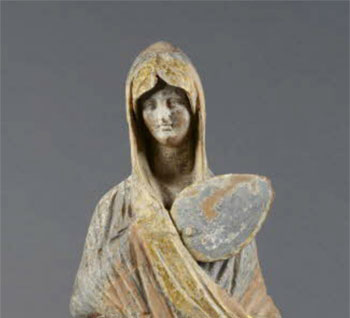
The Ascent of Women on Netflix, reflects on the issue of women in hijab. The veil or the hijab, a hot issue anywhere in the world today. France banned hijab, an Islamic custom, from schools, and other countries to follow suit. However, what is more intriguing is not the culture that hijab represents, but the origin of the hijab itself which percolated through ancient times into the middle-eastern Judean-Christian culture.
Hijab did not originate within the Islamic tradition. Although it was perhaps Islam which has been strictest in its implementation, resorting to hitting, or even scourging women if they didn't wear them. As for its genesis, Islam cannot claim that this notion of veiling has descended from Allah Himself straight into the Qur'an and made it nitty gritty.
What has shaped this custom of wearing a veil and the hijab, going far back in history? Interestingly, women enjoyed much greater freedom in ancient times in some cultures. Records show that ancient Mesopotamia Sumer, Assyria and Egyptian women's costumes did not include veil or any kind of scarf to cover their heads or parts of the face at all. The dresses they wore were fashionable, in which they looked confident and free, and equal to any male counterpart.
However, as far back as the Greek tradition, this use of veils and wraps became more discernible. Aristotle viewed women as inferior to men. And the ancient Greek culture, generally portrayed women as impure, whose bodies leaked various kinds of liquids, which shamed many high profile families (See Ascent of Women). Therefore, this impurity must be hidden under layers of clothing. Aristotle's idea of women was influential. It influenced the middle-eastern religions, particularly Islam, with serious consequences. Woman's clothing became an all-important issue to Clergies, Mullahs and Priests, whenever women entered a house of God, or went anywhere. Covering heads and parts of the face became essential. Exactly the same head-covering custom was noted in the Greek culture, as well as the Middle-East today. Statues of Greek woman with head coverings and lower parts of the face, even a slit cover to cover entire face, apart from the eyes, have been excavated and unveiled. Headcovering Customs of the Ancient World
Womens' costumes, however, differed according to hierarchy in the Greek culture. Higher class women had to wear head cover, but not concubines and slave girls. They were penalised if they did it according to Ascent of Women.
The moot point is this: that at the end of the day, there is no reason to condemn Islam as the main perpetrator, or innovator of this custom. Conversely, no reason either for Islam to believe this as divine law. It was just an extremely influential mainstream culture which did not die out, just as there were many ancient cultures existing and still do without the hijab, such as in the Dravidian society and the Mesopotamia.

The Piker Press moderates all comments.
Click here for the commenting policy.